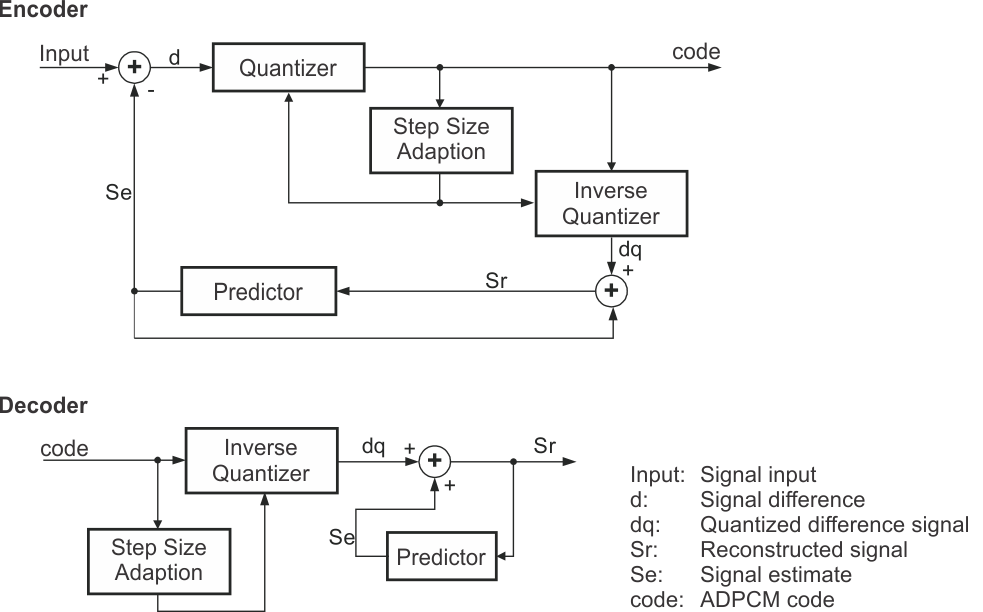SLAA361A July 2007 – August 2018 MSP430F169 , MSP430F169 , MSP430FG4618 , MSP430FG4618
2.2 Adaptive Differential Pulse Code Modulation (ADPCM)
ADPCM is a variant of DPCM that varies the quantization step size. Amplitude variations of speech input signals are seen between different speakers or between voiced and unvoiced segments of the speech input signal. The adaptation of the quantizer step size takes place every sample and ensures equal encoding efficiency for both low and high input signal amplitudes. Figure 3 shows the modified DPCM block diagram including the step-size adaptation.
 Figure 3. ADPCM Encoder and Decoder Block Diagram
Figure 3. ADPCM Encoder and Decoder Block Diagram The ADPCM encoder calculates the signal estimate, (Se), by decoding the ADPCM code. This means that the decoder is part of an ADPCM encoder. Hence, the encoded audio data stream can only be replayed using the decoder. This means that the decoder must track the encoder.
The initial encoder and decoder signal estimate level, as well as the step-size adaptation level, must be defined before starting encoding or decoding. Otherwise, the encoded or decoded value could exceed the scale.